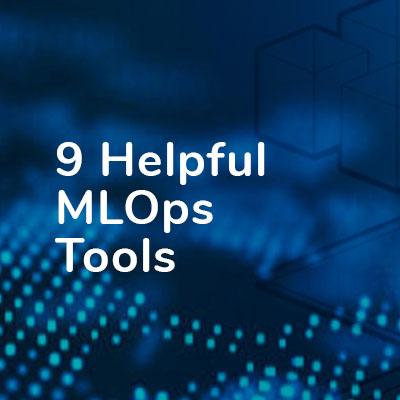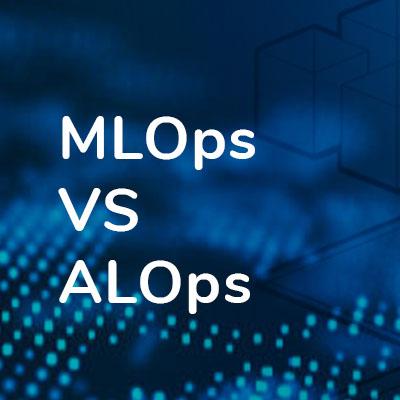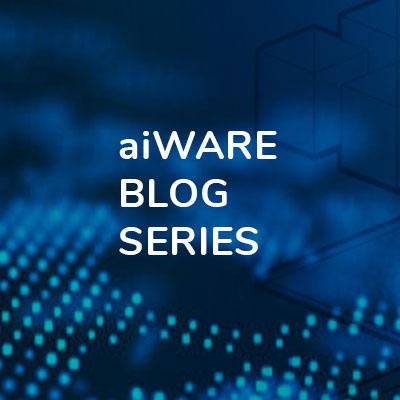Need to know the difference between ModelOps and MLOps? Find everything you need to know about ModelOps and how to implement it in your organization.
Table of contents:
What is ModelOps?
The ModelOps process
Why is ModelOps important?
What ModelOps use cases are there?
How does aiWARE enable and accelerate ModelOps?
Want to learn more about the world of MLOps?
Looking for a way to bring machine learning models into production in a scalable way and get measurable business value? ModelOps plays a critical role in bringing data, development, and production teams together on machine learning services and initiatives within your organization. The question is: how does this relate to MLOps, and how can you implement it? This post will discuss what ModelOps is and how it differs from MLOps.
WHAT IS MODELOPS?
Model operationalization, or ModelOps, is the term given to the process of producing, managing, scaling, monitoring, and improving analytic models that include and go beyond machine learning models. It enables organizations to apply analytic models to real-life use cases at scale by quickly moving models from the lab to production, managing and scaling models to meet demand, and monitoring models to drive continuous improvement.
According to Gartner, ModelOps focuses primarily on the governance and life cycle management of a wide range of operationalized artificial intelligence (AI) and decision models, including machine learning, knowledge graphs, rules, optimization, linguistic and agent-based models. Core capabilities of ModelOps include continuous integration/continuous delivery (CI/CD) integration, model development environments, champion-challenger testing, model versioning, model store, and rollback.
THE MODELOPS PROCESS
The typical ModelOps process includes four different phases: build, manage, deploy and monitor.
Build
The ModelOps process begins by collecting the data to solve a business problem. That data is then prepared for training models in the same phase.
Manage
During the management phase, the model is trained with the data that is available. Following that, processes including testing, versioning, and approval are completed from a central repository.
Deploy
At this stage, you deploy the model into production, integrating it into your business environment and putting the model to use.
Monitor
Following deployment, the model is continuously monitored. When data drifts and is no longer accurate, monitoring will make it possible to recognize it quickly and set the model up for retraining. Automatic updating of the models to compensate for data drift is also possible at this stage.
WHY IS MODELOPS IMPORTANT?
Often called the “last mile” for analytics, ModelOps allows you to move past last-mile AI operationalization challenges and begin to see a return on your investments. By helping companies with lifecycle management, ModelOps offers some key benefits, including:
Visibility and insights
ModelOps tools provide easy-to-understand dashboards with key metrics that make it easy for organizations to monitor and evaluate the performance and behavior of their AI models. The dashboards provide transparency into how teams are deploying and using AI across the organization and introduce explainability into AI-enabled outcomes. ModelOps dashboards help move AI forward by presenting AI information in a way that is understandable even to non-technical leaders.
Improved efficiency and collaboration
Despite their best efforts, most organizations have a missing link between the teams that are building and deploying the AI models and the teams that are overseeing and managing model operations. ModelOps closes this gap by sharing transparent goals for each model, outlining clear processes for both teams, and assigning definitive responsibilities to every role involved.
Reduced cost
ModelOps platforms significantly reduce time, effort, and resources at every stage in the life cycle. ModelOps reduces the amount of time it takes to move models to production—so you can deploy models in minutes, not months—and automates workflows to reduce time and effort across the board. Plus, as we just discussed, ModelOps improves collaboration across teams which results in greater efficiencies and an improved ability to control infrastructure costs.
Better risk management
ModelOps plays a key role in model governance and risk management, which become increasingly critical as you send more and more models into production. ModelOps platforms enable you to monitor model performance and identify risks early—before they can cause real damage. And, by increasing transparency into AI assets across your organization, ModelOps reduces the risks associated with “Shadow IT” solutions built or used without explicit IT department approval.
Increased revenue
ModelOps is key to unlocking the power of AI for enterprises. It connects pieces of your pipeline together to help ensure that analytic investments deliver business value—faster. By getting analytics out of the lab and into real-world application, ModelOps enables organizations to derive value from AI and increase ROI.
WHAT MODELOPS USE CASES ARE THERE?
There are several different areas where ModelOps can help your organization. Here’s a closer look at each one.
Bias detection
The way algorithms process datasets has to be continuously monitored. MLOps makes it possible to quickly intervene and avoid using biased datasets.
Robustness
Successful machine learning initiatives depend on a supply of high-quality data. The challenge is having that data available and secure, ModelOps helps us get this right.
Compliance
By enabling stronger governance, faster deployment, and performance monitoring across platforms, ModelOps can take the headache out of compliance and risk management.
Adherence to business KPIs
Deliver business value even more quickly by automating alerting. This way, you know when business and performance goals aren’t being met, and you can adjust or retire a model as needed.
HOW IS MODELOPS DIFFERENT FROM MLOPS?
If you struggle to understand the difference between ModelOps and MLOps, you’re not alone. It’s an area heavily marked by confusion. Let’s break down ModelOps vs. MLOps:
First, as a quick refresher, MLOps is the process of creating, deploying, and maintaining machine learning models. For a more in-depth look, check out our guide to MLOps. In comparison, ModelOps covers a wide range of operationalized AI and decision models. While ModelOps does include ML models, it’s not limited to just machine learning. As outlined above, ModelOps also covers knowledge graphs, rules, optimization, linguistic and agent-based models.
HOW DOES AIWARE ENABLE AND ACCELERATE MODELOPS?
With aiWARE, organizations can rapidly deploy and scale AI within their applications and business processes without requiring expensive AI developers and ML engineers. AI models are ready to deploy and deliver business value right away.
Veritone’s aiWARE leverages both organically produced as well as already-created AI models that have previously been data-prepared and discovered, developed, trained, and tested. This solution provides a deployment, integration, and monitoring platform for AI projects to help you meet business objectives.
WANT TO LEARN MORE ABOUT THE WORLD OF MLOPS?
If you’ve been following the MLOps series on our blog, you know we’ve already covered MLOps best practices and MLOps versus AIOps. Next up…MLOps tools. Stay tuned!





